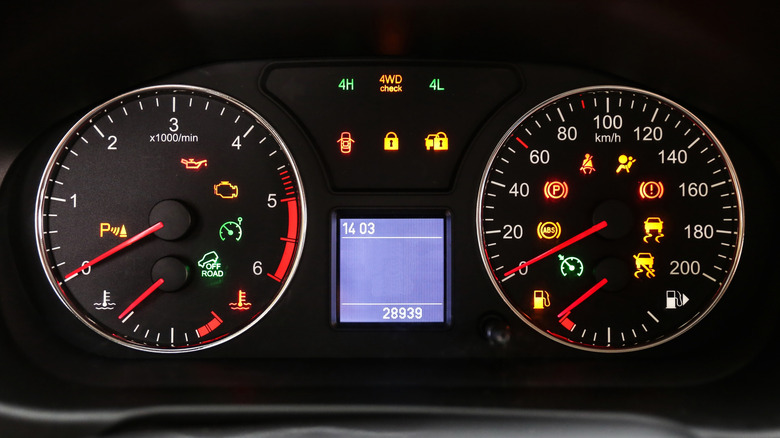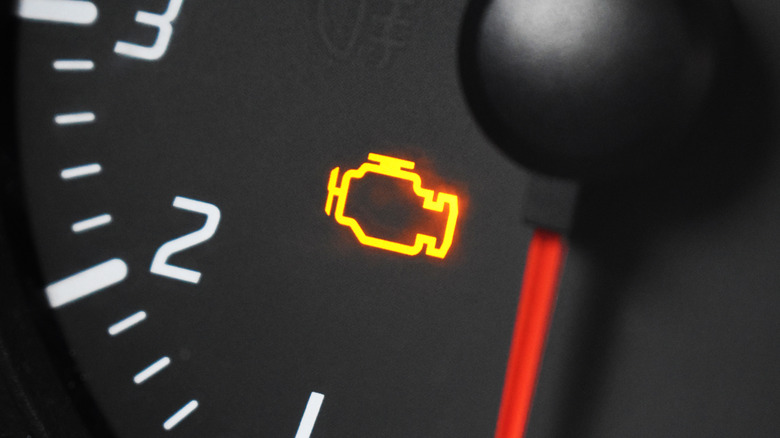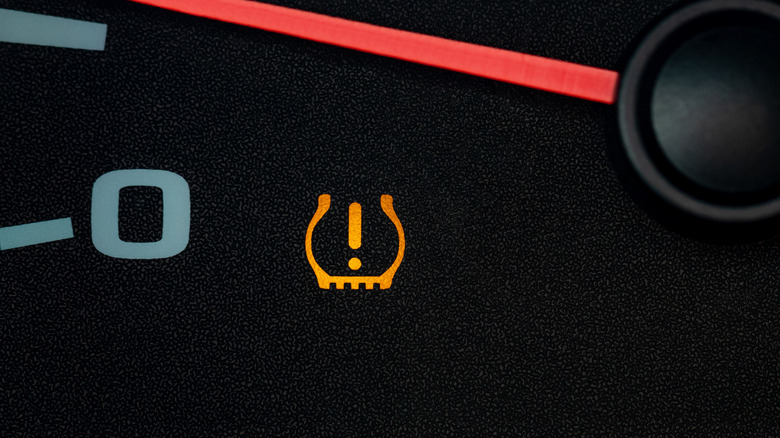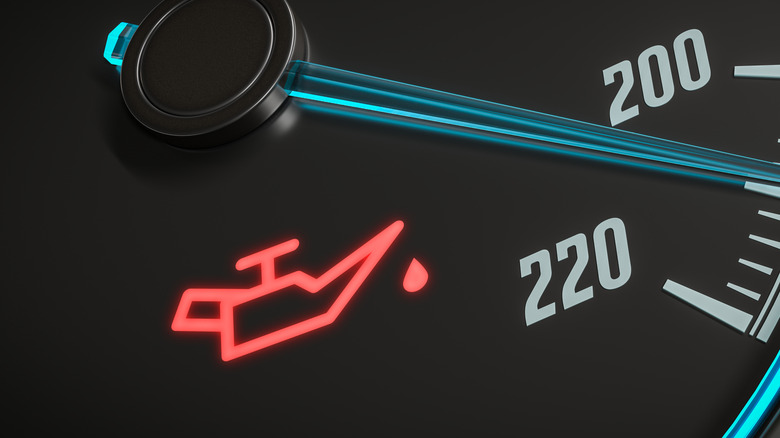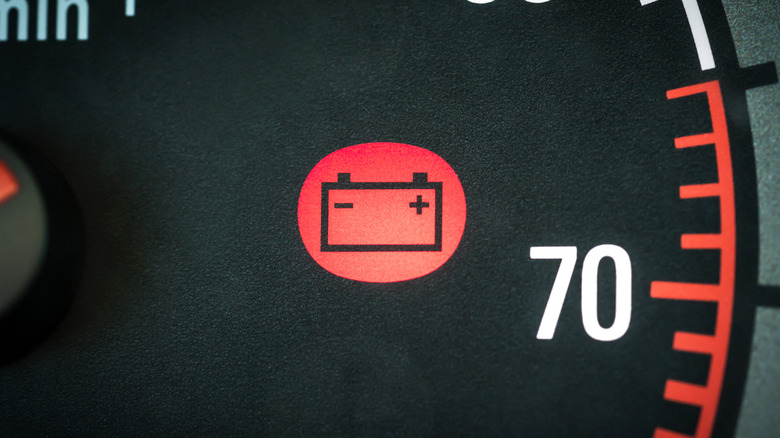5 Of The Most Ignored & Neglected Dashboard Warning Lights
From the fiery Ferrari to the plain Prius, all cars are mechanical marvels. Many drivers have little idea of the complex inner workings that keep these machines moving. While it's not necessary to have extensive knowledge of how every component works to own a car, it's nevertheless crucial to be aware of any irregularities in its performance. Your vehicle makes it easy to stay on top of this thanks to the set of common illuminated symbols that appear on its dashboard.
The purpose of dashboard lights is to make you aware of underlying issues with your car before they become a bigger problem down the line. In most cases, as long as you attend to these notifications with the appropriate urgency — whether that means fixing it yourself or getting a professional mechanic on the job — you can successfully dodge severe issues and potentially spend little on repairs. The light will turn off automatically once the problem is solved. But all too often, these warnings aren't taken seriously, ultimately resulting in an unhappy car and an even unhappier driver. Even if you hope a warning light will go away on its own, taking the time to find out why it's on can save you time and money.
Check engine light
The check engine light is perhaps the poster child of ignored dashboard symbols. As its name suggests, this engine-shaped light will appear to indicate an electrical or mechanical flaw under the hood. There are a variety of reasons why your car's check engine light may be on, ranging from a loose gas cap to serious engine problems. Whatever the reason, the longer this light is ignored, the greater the damage could be.
Depending on the vehicle, the severity of the damage will be indicated by the light's color or how fast it's blinking. For example, a yellow and that isn't blinking can point to a lesser problem. While it's generally safer to drive when the light is yellow, getting it inspected at this point is the smarter move. Doing so can prevent a problem from becoming bigger and more expensive to repair. Your car's fuel efficiency will also decrease the longer you wait to get it looked at, as the vehicle draws power from other components to keep things running.
What you really don't want to see is a blinking or red check engine light appear on your dashboard. That's a sign that you're dealing with an emergency, oftentimes involving engine misfires or similarly severe internal damage. If you notice this while on the road, you should pull over right away and get your car towed to the nearest mechanic.
Tire pressure monitoring system light
Seeing an exclamation point light up on your dashboard is a telltale sign of something that demands your attention. But what may not be as obvious is the strange horseshoe-like symbol that surrounds it. As a result, you may assume that it isn't anything of immediate concern and choose to ignore it. What those who adopt this mindset may not realize is that this symbol corresponds to the very support system that keeps their car moving.
The tire pressure monitoring system (TPMS) keeps track of the amount of air in each of your car's tires, with a sensor attached to each tire's valve system reading and relaying information to your vehicle. Whenever the tire pressure gets noticeably lower, the TPMS light will turn on. In most cases, this is caused by extreme changes in temperature. This is especially prevalent during the winter months, as the higher air density will cause the air to condense at a faster rate. This warning can also appear when the system detects overinflated tires or a malfunctioning transmitter.
As usual, regular maintenance can go a long way in preventing this symbol from appearing. Get into the habit of performing monthly tire pressure checks, ensuring that they stay within the parameters detailed in your owner's manual and adjust as needed. If your TPMS light turns on, pull over and check your tire pressure manually, as the light can turn off even if the tires aren't properly inflated.
Oil pressure warning light
Oil is the lifeblood of your car, plain and simple. Without it, the many gears and mechanisms that make up your vehicle's engine won't receive the lubrication they need to operate properly, leading to overheating and eventual system failure. So it goes without saying that if you spot a little oil canister symbol on your dashboard, you shouldn't ignore it.
The oil pressure light will pop up anytime your car senses that there's a problem with the oil pressure. Many times, this is simply an indicator that the oil level is too low and needs to be topped off immediately. To check this, pull over as soon as you spot the symbol and pop open the hood. Next, pull out your car's oil dipstick to see what level the oil is at, reinsert it, and wipe it off a few times until you get a consistent reading. If the level is low, top it off with the right oil for your car. Ensure you always have the appropriate motor oil for your car in the trunk, so if you find you have too little oil, you can fill it up.
In some situations, you'll want to have a professional take a look. If you pull out the dipstick and find that the oil is overly dark, has a strong odor, or is coated in debris, that means your oil supply is dirty and your car needs a complete oil change to remove it. There may also be scenarios where the oil level and quality seem fine, but the light remains on. This is an indicator that the pump or sensor itself is malfunctioning, in which case a full repair or replacement by a mechanic will be needed.
Antilock brake system light
When you start your car, one of the most prominent symbols to light up on the dashboard is the ABS indicator. Since the 1990s, ABS, also known as antilock braking system, has become a standard safety feature in practically all cars. It acts as a control mechanism that prevents your car wheels from locking if you brake hard, giving you better control of your vehicle in emergency situations while preserving the life of the wheels and tires.
It's easy to overlook this function or believe you're a good enough driver to never wind up in that type of situation. But even the most experienced drivers can't always anticipate what will unfold when they're on the road, making any and all safety systems crucial to maintain. If the ABS light pops up on your dashboard long after you've started your car, the risk you take by ignoring it is significant. As with other warning lights, there's no cut-and-dry reasoning for this symbol to appear. Common causes include interference from the traction control system, disabled or dirty sensors, or low brake fluid levels. At any rate, given the crucial factor this emergency feature plays, it's important that you get this looked at by a professional as soon as you spot it.
Battery light
Car batteries are easy to take for granted. Depending on how well you maintain your car's battery and the specific type you have, it could potentially last upward of 10 years, although 3-5 years is more common. As a result, it's easy to forget about it while maintaining other aspects of your vehicle. However, your car's battery won't last forever, and it will let you know when its time is up with a red battery symbol on the dashboard.
Your first instinct when seeing this image is that the battery itself is dead or dying. This can certainly be the culprit, as your battery will grow weaker the longer it's in use, while also struggling to hold its charge. However, this light can also point to other significant issues related to the battery or your car's electrical system. The battery or its components may be damaged, often from terminal corrosion, which could negatively affect its ability to communicate with and power the rest of the vehicle. Other parts of the electrical system, such as the alternator and voltage regulator, could also be going faulty.
Leaving your battery to weaken more than it already has will spell disaster for your car. Without sufficient power to keep things running smoothly, you may notice that components such as the headlights, radio, and windows will run significantly slower, while the car itself will get worse gas mileage. If you run into this problem, don't wait for things to get worse. Instead, have your car battery looked at or replaced by a mechanic.
